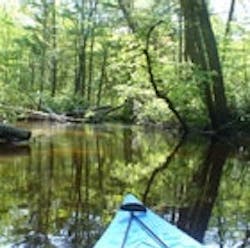EPA, Army Corps of Engineers Release Draft Guidance for Clean Water Act
Environmental Protection Agency Regional Administrator Judith Enck traveled Wednesday to New York’s Great Swamp in Brewster, N.Y., to discuss the importance of clean water and a draft guidance developed by the EPA and the U.S. Army Corps of Engineers to clarify which waters are subject to protection under the Clean Water Act.
The future status and condition of the Great Swamp is dependent not only on what happens directly within the swamp, but also on activities within its nearly 100-square-mile watershed, which includes the headwaters of the Housatonic River, the Croton River, Long Island Sound and New York Harbor. Part of the Great Swamp lies within the New York City watershed, and the Croton watershed in the past has provided about 10% of New York City’s drinking water. Headwater streams and their adjacent wetlands are where our larger streams, rivers and lakes originate.
“Clean water is our most vital natural resource and its protection is directly tied to preserving wetlands and other bodies of water,” said Enck. “The new federal guidance will help restore protection to critical waters and provide clearer guidelines for determining which water bodies we can keep safe from pollution and other pressures.”
On April 27, EPA and the Army Corps of Engineers officials released "Draft Guidance on Identifying Waters Protected by the Clean Water Act" for a 60-day public comment period. This draft guidance clarifies how EPA and Corps officials will identify U.S. bodies of water under the Clean Water Act.
Source: EPA
